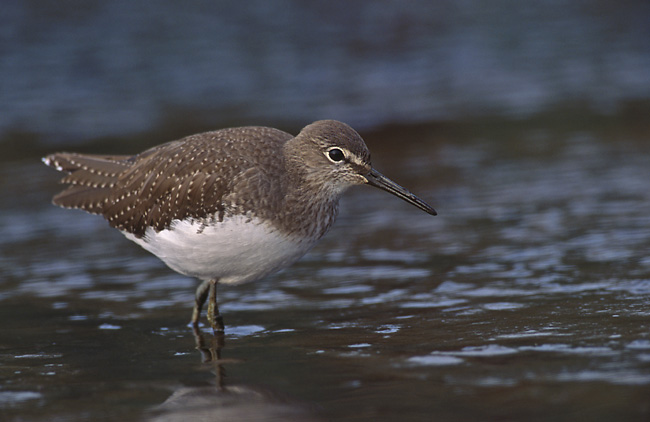| New Photos | Animal News | Animal Sounds | Animal Movies | Upload Photo | Copyright | Korean |
|---|
| Funny Animal Photos | Monsters in Animalia | Wiki Articles Fun Facts about Animals | Links | Home | Mobile A.P.A. |
|---|
| Image Info | Original File Name: Green Sandpiper (Tringa ochropus)_1_(Marek_Szczepanek).jpg Resolution: 650x422 File Size: 85534 Bytes Date: 2004:11:22 00:07:45 Upload Time: 2007:10:01 23:34:57 | |
| Author | Name (E-mail): Unknown | |
| Subject | Green Sandpiper (Tringa ochropus) - Wiki | |
 |
| Email : E-Card | Poster | Web Master Delete Edit Info Admin |
| Description | Green Sandpiper (Tringa ochropus) - Wiki
Green Sandpiper
The Green Sandpiper, Tringa ochropus, is a small wader (shorebird). Its only close relative in the genus Tringa is the Solitary Sandpiper (Pereira & Baker, 2005); they both have brown wings with little light dots, and a delicate but contrasting neck and chest pattern. In addition, both species nest in trees, unlike most other scolopacids. It breeds across subarctic Europe and Asia. It is a migratory bird, wintering in southern Europe and Asia, and tropical Africa. This is not a gregarious species, although sometimes small numbers congregate in suitable feeding areas. Green Sandpiper is very much a bird of fresh water, and is often found in sites too restricted for other waders, which tend to like a clear all-round view. This species is a dumpy wader with a dark green back, greyish head and breast and otherwise white underparts. The back is spotted white to varying extents, being maximal in the breeding adult, and less in winter and young birds. The legs and short bill are both dark green. It is obvious in flight, with wings dark above and below, and a brilliant white rump. The latter feature distinguishes it from the slightly smaller but otherwise very similar Solitary Sandpiper of North America to which it is closely related.In flight it has a characteristic three-note whistle. Green Sandpiper lays 2-4 eggs in an old tree nest of another species, such as a Fieldfare. The eggs take about three weeks to hatch. Food is small invertebrate items picked off the mud as this species works steadily around the edges of its chosen pond. The Green Sandpiper is one of the species to which the Agreement on the Conservation of African-Eurasian Migratory Waterbirds (AEWA) applies. Given its basal position in Tringa, it is fairly unsurprising that apparent hybrids between this species and the Common Sandpiper of the sister genus Actitis have been reported. http://en.wikipedia.org/wiki/Green_Sandpiper
| |||
| Copyright Info | AnimmalPicturesArchive.com does not have the copyright for this image. This photograph or artwork is copyright by the photographer or the original artist. If you are to use this photograph, please contact the copyright owner or the poster. |
|
|
|
| |||||||
| CopyLeft © since 1995, Animal Pictures Archive. All rights may be reserved. | ||||||||
Stats